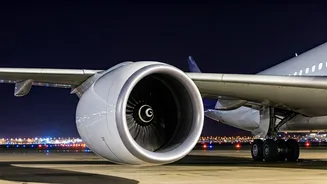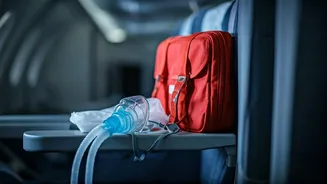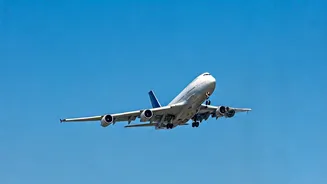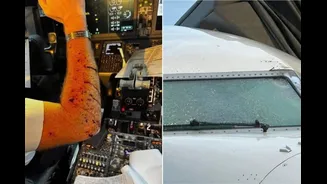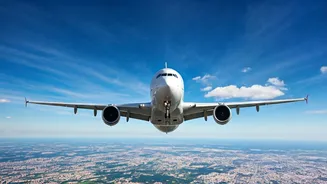Initial Problem Detected
The incident unfolded when an Air India Express flight, which was scheduled to fly from Guwahati to Dibrugarh, experienced a technical malfunction, necessitating
an immediate return to Guwahati Airport. Reports indicated that the pilots, after identifying the issue, acted in adherence to standard operating procedures to ensure the safety of everyone on board. The decision to turn back was a critical one, underscoring the value of quick thinking and adherence to strict protocols within the aviation industry. The swift return to the originating airport demonstrates the safety measures in place to mitigate potential risks associated with technical failures that could jeopardize the flight's safety. The event triggered a series of evaluations and investigations that are standard practice following such situations, demonstrating the seriousness with which such events are handled.
Safety Protocols Activated
Following the identification of the technical fault, the flight crew promptly initiated the appropriate safety protocols and procedures. These protocols include detailed checklists, which guide the flight crew through a systematic process of troubleshooting and assessment. The crew's training and experience were crucial in accurately diagnosing the problem and ensuring the safety of the aircraft and its passengers. Upon the decision to return, the air traffic controllers were quickly informed, and the ground support teams were mobilized to prepare for the safe landing of the aircraft. This collaborative effort between the flight crew, air traffic control, and ground personnel exemplified the aviation industry's dedication to passenger safety. The precise execution of established protocols minimized the risks associated with the situation.
Passenger Experience Impacted
The abrupt return to Guwahati Airport undeniably affected the passengers' travel plans. Delays and uncertainties were inevitable. Air India Express, immediately after the event, would have taken steps to offer support to the passengers to ease their inconvenience. This could include providing accommodations, rescheduling flights, or offering compensation for the disruption. The airline typically communicates regularly with the affected passengers, keeps them informed on updates, and addresses concerns or questions they may have. Although such situations can be frustrating, the airline's priority is to offer support, ensuring that passengers reach their destinations safely. The effective communication and assistance are critical in managing the impact of the event and preserving passenger satisfaction in times of stress.
Investigation and Analysis
Following the flight's return, the aircraft undergoes a thorough technical inspection by qualified engineers and maintenance personnel. The detailed investigation aims to identify the specific cause of the technical snag, which informs measures for preventive maintenance. A comprehensive evaluation involves inspecting various aircraft systems, including engines, avionics, and flight controls. Any abnormalities are meticulously documented. The collected data is analyzed to create a final report. This report is essential for preventing future occurrences of similar incidents. The aviation industry uses this as a continuous learning process to enhance safety standards and operational efficiency. The feedback from such investigations helps improve aircraft design, maintenance procedures, and pilot training, collectively leading to better safety practices.
Industry-Wide Significance
The incident serves as a reminder of the complex safety mechanisms within air travel. It highlights the importance of regular aircraft maintenance and stringent safety checks that are in place. The occurrence underscores the crucial role of quick decision-making by flight crews. The prompt actions are crucial to minimize risks. These events are not isolated instances. Each incident is a crucial source of learning for airlines and regulatory bodies. The commitment to safety is a core value in the aviation sector. Ongoing reviews of safety protocols, technological advancements, and training programs help maintain and improve safety standards. The industry continuously works to prevent issues and guarantee secure travel experiences for all passengers.
